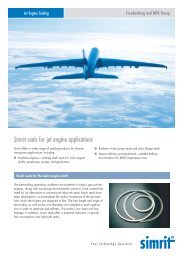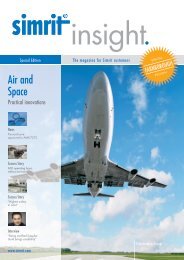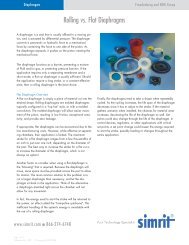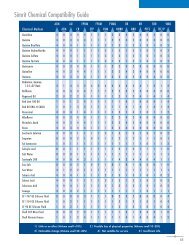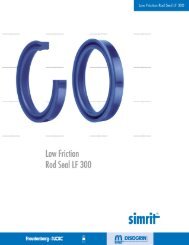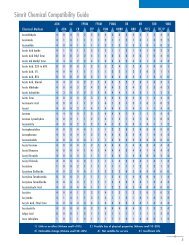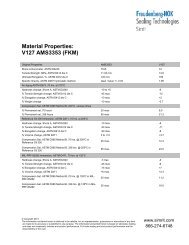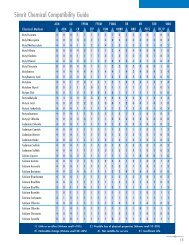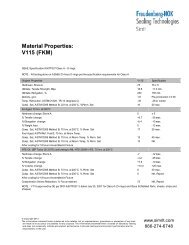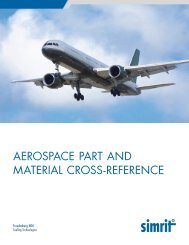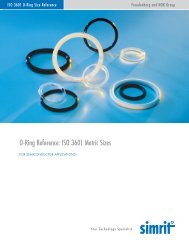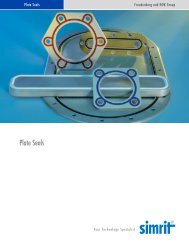Diaphragm Design Manual - Simrit
Diaphragm Design Manual - Simrit
Diaphragm Design Manual - Simrit
Create successful ePaper yourself
Turn your PDF publications into a flip-book with our unique Google optimized e-Paper software.
elastomers at high temperatures — they too can extract plasticizers.Studies have shown that during use, fuels, oils and other chemicals often replace the elastomer’splasticizers, giving greater flexibility to the elastomer at lower temperatures.However, when the chemicals or fuels evaporate, causing a dry-out condition, it is often verydifficult, if not impossible, to replasticize the elastomer just by bringing it back into contact withthe same chemical or fuel.Relying on the absorbed chemicals or fuels to solve the low temperature problem is not arecommended practice and is discussed here for informational purposes only.TolerancesDue to the interplay between dimensional tolerances and stresses (residual and otherwise), ourdiscussion on diaphragm design criteria would not be complete without an overview of diaphragmtolerancing.<strong>Design</strong> Guideline - Form, Fit, and FunctionIn today’s quality environment, the designer is often forced to choose tolerancesthat convey the critical nature of their application. While <strong>Simrit</strong> is always strivingto develop new ways to make consistently better products, the nature of rubberwith fabric reinforcement precludes the use of machining style tolerances.In an effort to keep the cost of quality in line with the diaphragm’s application,we offer the following questions for the designer to consider as they developtheir diaphragm geometry:1) Is the final product the right shape to do the job?2) Does it fit properly in the hardware without distortion?3) Does it function within the desired design parameters of theassembly?There must be a clear understanding between all involved as to acceptable dimensions and how they areto be verified.<strong>Diaphragm</strong>s made via a one side coated process and coated fabric diaphragms have differing tolerancerequirements. Both have their greatest tolerance needs in relation to the height of the convolution,especially those made from cured coated fabric. When it comes to cross-sectional thickness, coatedfabrics can generally hold tighter tolerances on this and other closure related dimensions.The wide variety of situations and applications precludes a detailed discussion on the dimensionaltolerancing of diaphragms, but please review Table 17, which list tolerance standards for all of thetypical diaphragm requirements.Please also see Technical Flyer Page 60– Tolerances of Fabric Reinforced <strong>Diaphragm</strong>s foradditional insight into this topic.Should you feel that your situation is not covered by the information contained herein, the <strong>Simrit</strong>Engineering and Quality Groups will be happy to discuss all options available for your intendedapplication.© Copyright FNGP 200945



